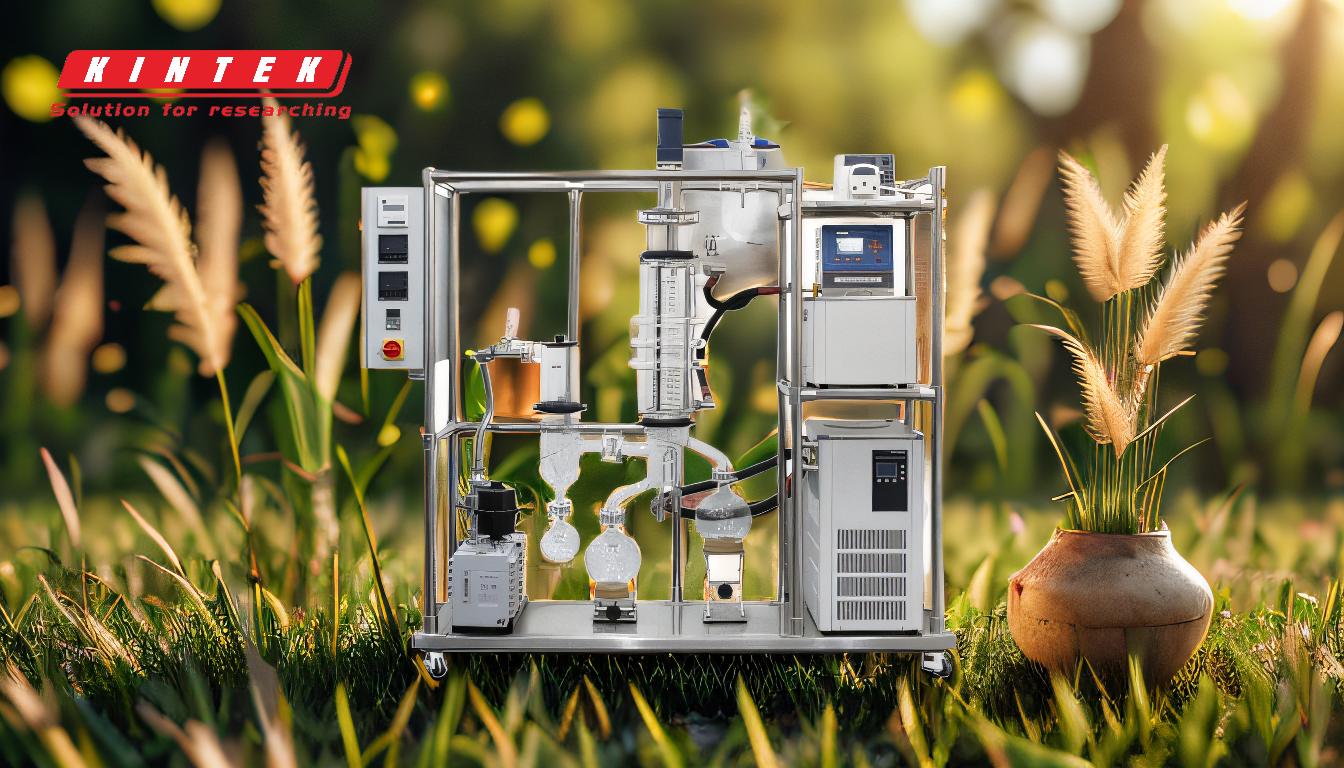Distillation is a versatile separation technique used to isolate components of a liquid mixture based on their differing volatilities, boiling points, and heat sensitivities. It is widely employed in industries such as chemical manufacturing, pharmaceuticals, food processing, and even household applications. Distillation can handle a wide range of substances, from simple volatile solvents to complex, heat-sensitive organic molecules like fatty acids. Molecular distillation, a specialized form, is particularly suited for delicate compounds that are prone to degradation at high temperatures. This method minimizes heat exposure and ensures the safe separation of thermally unstable substances. Below, we explore the key substances separated by distillation and the principles behind their separation.
Key Points Explained:

-
Volatile Solvents:
- Distillation is commonly used to separate volatile solvents from liquid mixtures. These solvents have low boiling points and can be easily vaporized and condensed back into liquid form.
- Examples include ethanol, acetone, and methanol, which are often separated from water or other solvents in chemical and pharmaceutical processes.
- The process relies on the difference in boiling points between the solvent and the other components in the mixture.
-
Heat-Sensitive Organic Compounds:
- Molecular distillation is specifically designed for separating heat-sensitive organic compounds, such as fatty acids, essential oils, and vitamins.
- These substances are prone to degradation or decomposition when exposed to high temperatures for prolonged periods.
- By operating under reduced pressure and shorter exposure times, molecular distillation minimizes thermal damage and preserves the integrity of the compounds.
-
Complex Organic Molecules:
- Distillation is effective for separating complex organic molecules with high molecular weights and low volatility.
- Examples include triglycerides, phospholipids, and sterols, which are often found in natural products like vegetable oils and animal fats.
- The process ensures the purification of these compounds without altering their chemical structure.
-
Substances with Close Boiling Points:
- Fractional distillation is used to separate substances with similar boiling points, such as hydrocarbons in petroleum refining.
- This method employs a fractionating column to achieve multiple vaporization-condensation cycles, enhancing the separation efficiency.
- Examples include the separation of gasoline, diesel, and kerosene from crude oil.
-
Thermally Unstable Compounds:
- Distillation is ideal for purifying thermally unstable substances, such as certain pharmaceuticals and bioactive compounds.
- Short-path distillation, a variant of molecular distillation, is particularly effective for these applications due to its reduced heat exposure and rapid separation.
- This method is crucial for producing high-purity products in the pharmaceutical and nutraceutical industries.
-
Water and Other Liquids:
- Distillation is widely used to purify water by separating it from dissolved salts, minerals, and other impurities.
- It is also employed to separate liquids with significantly different boiling points, such as ethanol and water in the production of alcoholic beverages.
- The process ensures the removal of contaminants and the production of high-purity liquids.
-
Crystallization and Melting Point-Based Separation:
- In some cases, distillation is combined with crystallization to separate compounds based on their melting points.
- This approach is useful for isolating solid compounds from liquid mixtures, such as in the purification of waxes and resins.
- The process involves cooling the distilled product to induce crystallization, followed by filtration or centrifugation.
By leveraging the unique physical properties of substances, distillation offers a reliable and efficient method for separating a wide range of materials, from simple solvents to complex organic molecules. Its adaptability to different conditions, such as reduced pressure and temperature, makes it indispensable in various industrial and laboratory applications.
Summary Table:
| Substance Type | Examples | Distillation Method | Key Applications |
|---|---|---|---|
| Volatile Solvents | Ethanol, Acetone, Methanol | Simple Distillation | Chemical, Pharmaceutical Processes |
| Heat-Sensitive Compounds | Fatty Acids, Essential Oils, Vitamins | Molecular Distillation | Nutraceuticals, Cosmetics |
| Complex Organic Molecules | Triglycerides, Phospholipids, Sterols | Molecular Distillation | Food Processing, Natural Product Purification |
| Substances with Close Boiling Points | Gasoline, Diesel, Kerosene | Fractional Distillation | Petroleum Refining |
| Thermally Unstable Compounds | Pharmaceuticals, Bioactive Compounds | Short-Path Distillation | Pharmaceutical, Nutraceutical Industries |
| Water and Other Liquids | Ethanol-Water Mixtures, Purified Water | Simple/Fractional Distillation | Beverage Production, Water Purification |
| Crystallization-Based Separation | Waxes, Resins | Distillation + Crystallization | Chemical, Industrial Applications |
Need expert advice on distillation techniques for your industry? Contact us today to learn more!









